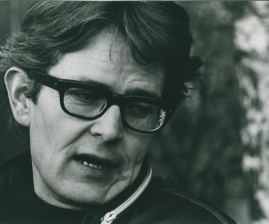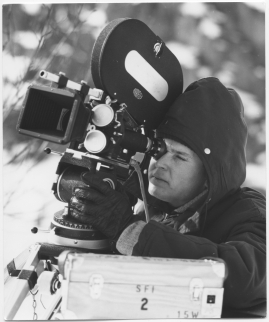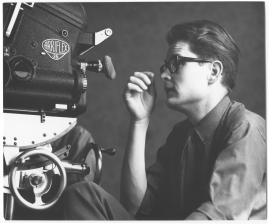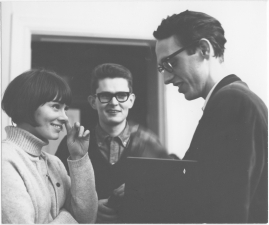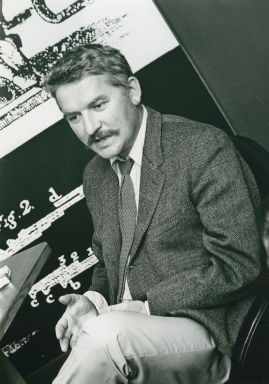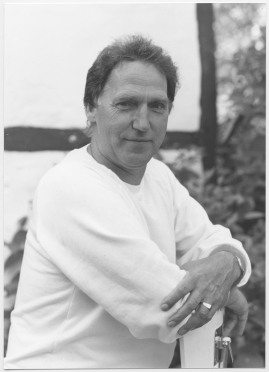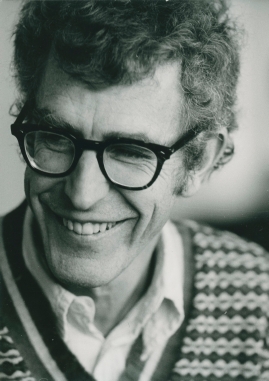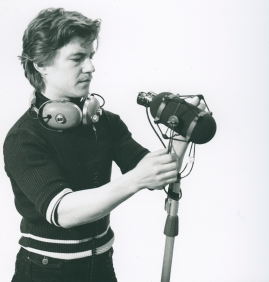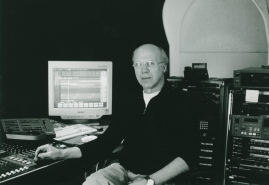Jörgen Persson
Table of contents
- Basic facts
- Links and resources
- Biography
- Awards
- Films
- Original work
- Soundtrack listing
- Groups
Basic facts
Media (4)
| Director of Photography |
|
|---|---|
| Cast | |
| Show all films | |
| Awards |
|
Biography
Swedish cinematographer. Born as Alf Jörgen Persson in Helingborg.-Jörgen Persson achieved his international breakthrough with Elvira Madigan in 1967. By virtually eschewing all artificial lighting, Persson achieved a tone-rich colour palette which was revolutionary at the time, and he has continued to be celebrated for his ability to assimilate and make use of natural light.Persson studied cinematography as one of the first batch of students at the Film School which was founded in 1964. At the time, he had already gained quite a wide experience of...
Biography
Swedish cinematographer. Born as Alf Jörgen Persson in Helingborg.
-
Jörgen Persson achieved his international breakthrough with Elvira Madigan in 1967. By virtually eschewing all artificial lighting, Persson achieved a tone-rich colour palette which was revolutionary at the time, and he has continued to be celebrated for his ability to assimilate and make use of natural light.
Persson studied cinematography as one of the first batch of students at the Film School which was founded in 1964. At the time, he had already gained quite a wide experience of the subject. Together with his childhood friend, Stellan Olsson, who later became a film and theatre director, Persson had been involved in amateur filmmaking, having made an almost hour-long colour film for the local authority in the southern Swedish town of Höganäs close to his place of birth. During his student days Persson came into contact with the film director Bo Widerberg, who like Persson was inspired by the French New Wave. Before Persson had even left the Film School he made his feature debut as a cinematographer in Widerberg's Heja Roland! ('Go Roland!', 1966), then in the summer of 1966 they shot their colour feature debut together with Elvira Madigan. At the time colour was regarded as requiring very strong lighting, and was associated with the garish tones of Technicolor. The beautiful yet at the same time realistic and nuanced cinematography of Elvira was something new, a milestone in Swedish film that was also internationally acclaimed. Persson used film intended for electrical lighting with the light sensitivity equivalent of 50 ISO, which required the use of a filter when shooting under different light conditions.
Persson went on to work with Widerberg on a total of seven films, including his contributions to The Man from Majorca (Mannen från Mallorca, 1984). From the outset the partnership got Persson used to relying on his intuition where lighting and camerawork were concerned, a practice he continued to follow. In En kärlekshistoria ('A Love Story', Roy Andersson, 1970) he made use of many lessons from Elvira combined with greater precision under what was a more carefully planned shoot. Persson's talent for making the most of the light without making the cinematography so striking that it detracts from the storyline served him well in his work on bleak narratives such as The Simple-Minded Murderer (Den enfaldige mördaren, 1982) and Pelle the Conqueror (Pelle Erövraren, 1987). The directors of theses films, Hans Alfredson and Bille August, have frequently worked with Persson. In addition, the fact that Jörgen Persson was the cinematographer for two of Lasse Hallström's most successful films, Tuppen ('The Cockerel', 1981) and My Life as a Dog (Mitt liv som hund, 1985) confirms that Persson's images must be among the most widely seen in Sweden.
One of his most famous sequences occurs in Den enfaldige mördaren. The star of the film, Stellan Skarsgård, is looking at his thumb, which is shown in extreme close-up. In a fade, the patterns on his skin are transformed into the pattern of a ploughed field on a hill which Skarsgård is climbing. The image was written into Alfredson's screenplay, and only became possible when, after an extensive search, a suitable field was found on one of the final days of shooting.
Mårten Blomkvist (2011)
(translated by Derek Jones)
Awards
| Nominated for the Guldbagge Award | Gothenburg | 2002 | Best Cinematography | ||
|---|---|---|---|---|---|
| Stockholm | 1995 | Best Cinematography | |||
| Stockholm | 1993 | Best Cinematography | |||
| European Film Award | Paris | 1989 | (bästa foto) | ||
| The Robert Award (Denmark) | Copenhagen | 1987 | (bästa foto) | ||
| The Guldbagge Award | Stockholm | 1987 | Special Achievement | ||
| Bodil (Denmark) | Copenhagen | 1987 | (bästa foto) | ||
| Festival Award | Chicago | 1982 | (bästa foto; silverplakett) | ||
| The Kurt Linder Grant | Stockholm | 1969 | |||
| Chaplin Magazine Award | Stockholm | 1968 | (hedersomnämnande för färgfoto) |
